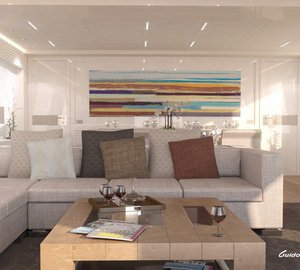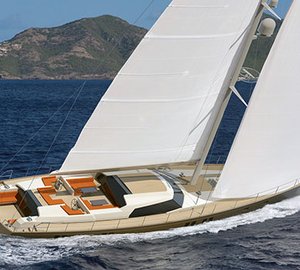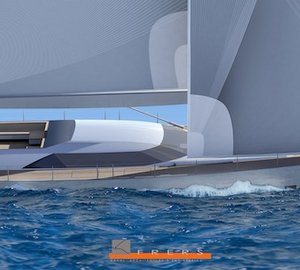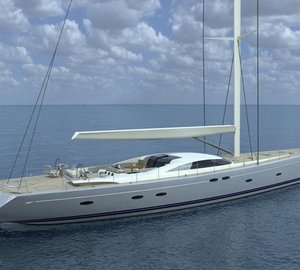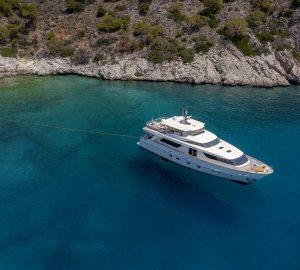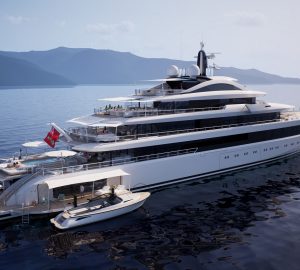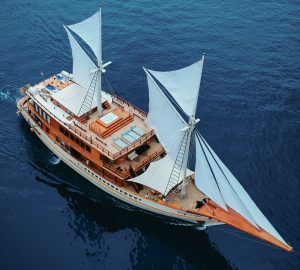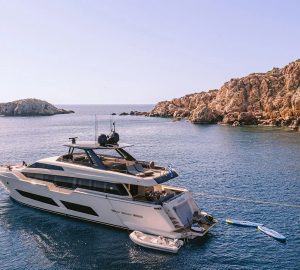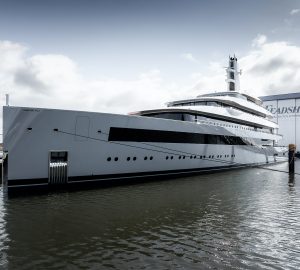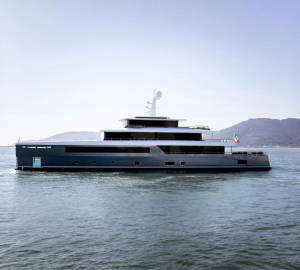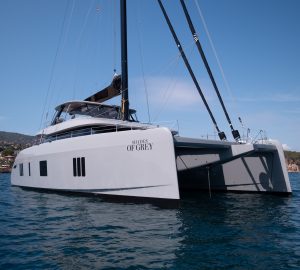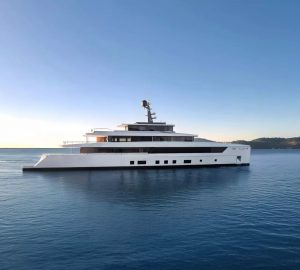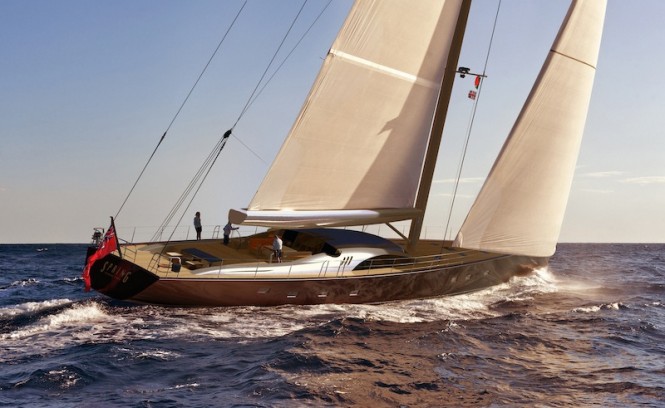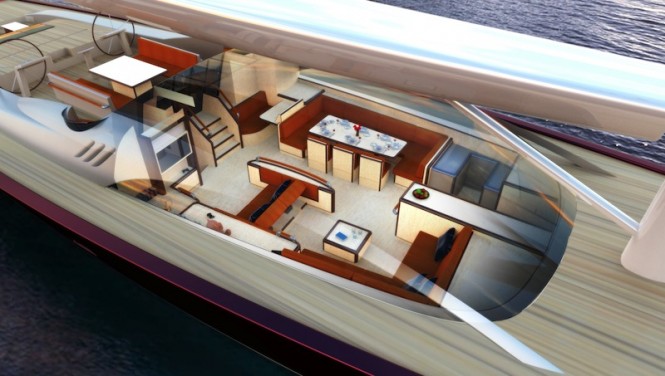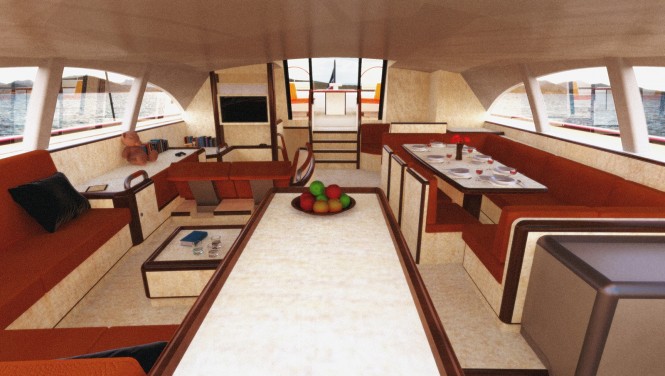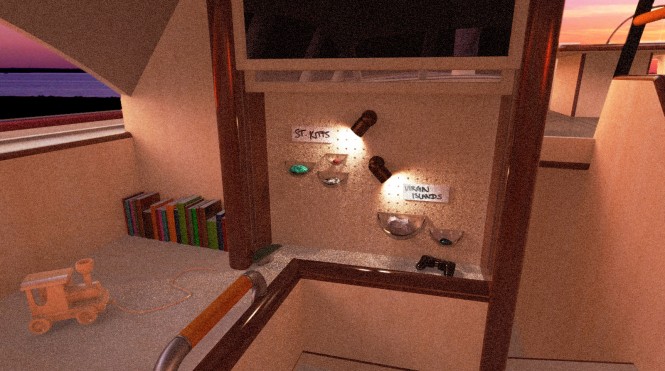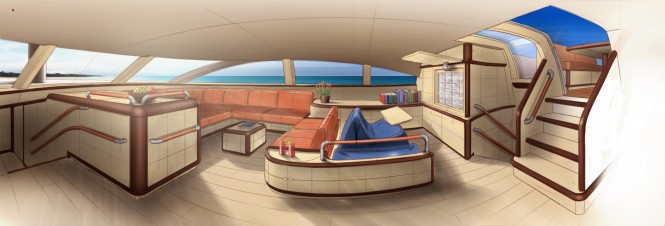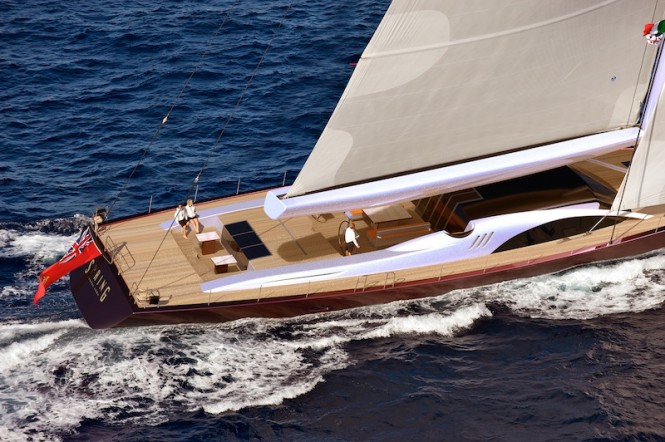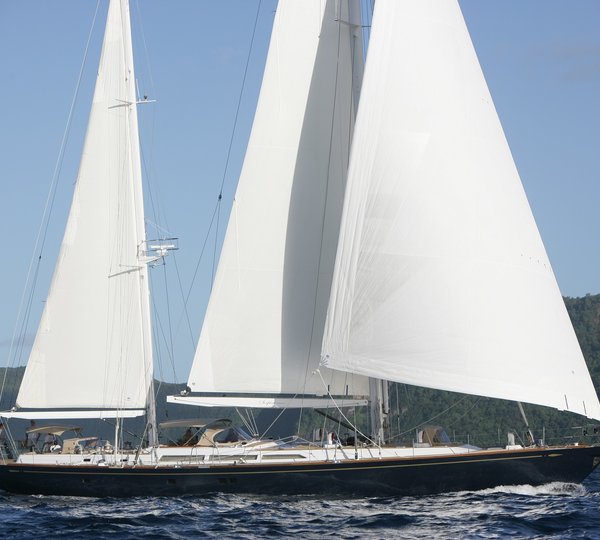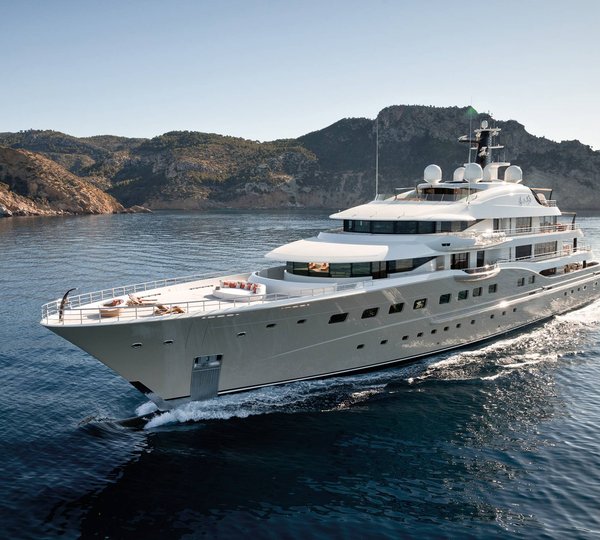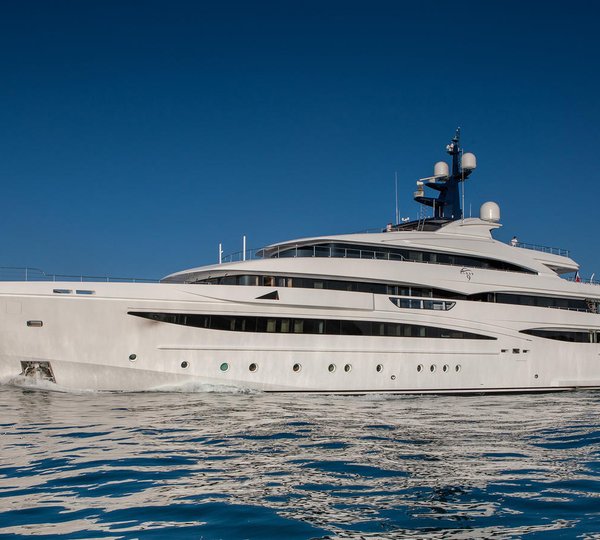To obtain his master’s degree in Integrated Product Design at the Delft University of Technology in the Netherlands, Dutch design student Jim Robert Sluijter decided to take on a new challenge and design a sailing yacht. In order to gain the best experience, he spent two months at the Andrew Winch Designs studio and three months at Vitters Shipyard to complete his graduation project. The assignment was to design a new deckhouse and cockpit area for a 43-metre sailing yacht.
To begin with, the project was based on a hull and a layout of an existing 43-metre sailing yacht, except for the cockpit and salon/deckhouse.
The inspiration behind the design is based on requests by a fictional client with a young family and two children aged 4 and 9. In addition the Owner is very tall (2,05m), requiring additional adjustments in design. Because a yacht of 43 metres provides larger open spaces than a smaller sailing boat, children find more difficulty in moving around, while the yacht is at sea. The handles and bulkheads to hold onto are hard to reach, due to the size of the yacht, limiting children’s enjoyment while the yacht is under sail. Surely, while the yacht is at anchor, children have fun outside, however it becomes more difficult during long crossings.
Accommodation aboard the Jim Robert Sluijter designed 43m sailing yacht is provided to the Owner, his wife, two children and four additional guests.
The most important exterior design feature of this luxury yacht is her sleek exterior profile. Even though the interior provides enough headroom for the tall owner, the designer was able to maintaing her sleek profile, by detaching the profile line from the deckhouse towards the front.
On the other hand, the most significant interior design feature is her salon, breathing an ambience of child friendliness, incorporating bright colours with dark rounded edges throughout. Its layout allows children to be able to hold onto something at any location in the saloon and offers a dedicated area for them to play within. Special seats for the children and a multifunctional wall define this ‘play zone’. The flexibility of seats support the needs of the children, whether they want to lie down, play video games, play with toys or study. In addition it allows for additional use of these seats when children are not on board. The multifunctional can hold trophies and ‘treasures’ collected by children during the voyages, such as locally found items, rocks, shells – a fun and adventurous way to record their journeys.
The yacht is designed to be constructed with an aluminium hull and an aluminium or carbon fibre superstructure, depending on the client’s desires. In terms of design and construction, technical equipment in and around the salon of the existing yacht were analysed, such as the fan coils units, navigation equipment, engine room ventilation and captive winches. These elements were rearranged, so they would work well with the new design. For example, the captive winches had to be rearranged, compared to the original yacht, because of the low continuous line of the profile. This made the ventilation air slots move higher up to the side. In the new design, they form a unique detail and a funny reference, since some fish have similar shaped gills with comparable functionality.
About Jim Robert Sluijter
Jim Robert Sluijter is a Dutch design student who gained experience in designing motor yachts thanks to his internship at De Voogt Naval Architects and Andrew Winch Designs. He was a runner up at this year’s ShowBoats for the Young Designer of the Year Award. As mentioned previously, he has decided to take on a new challenge in the form of a sailing yacht, to get his master’s degree in Integrated Product Design at the Delft University of Technology in the Netherlands. To have the best learning experience, he has spent two months at the office of Andrew Winch Designs and three months at Vitters Shipyard to complete his graduation project – the 43m Sailing Yacht.

